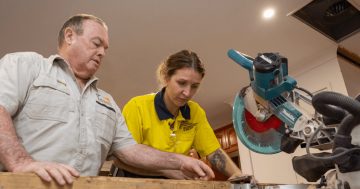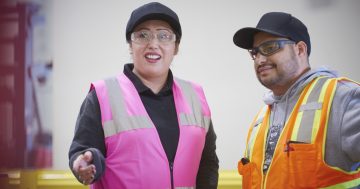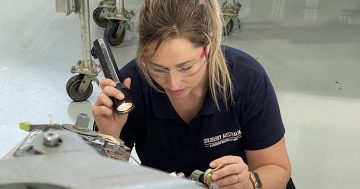Katherine Post* says the Australian defence industry continues to have a poor record as an employer of choice for women, narrowing the field of available skilled talent.

Photo: Gorodenkoff
With the Australian Government committing unprecedented funds to defence capability, the defence industry is set to see significant growth in the next decade and beyond, creating thousands of new jobs.
The Government’s $90 billion Naval Shipbuilding Plan, for example, is estimated to create up to 15,000 new jobs.
For those in the industry, this gives cause for significant optimism.
But it also presents a significant challenge — the skilled workers needed to fill those jobs are in short supply.
Adding to this challenge is the fact that the defence industry has historically struggled to attract and retain skilled women.
Our analysis of workforce data for the top 20 defence industry companies showed that less that one in five defence industry employees are women, and less than one in seven defence industry managers are women.
Only one in 14 new apprentices in the industry are women.
Naval Group, the company which won the $50 billion tender to build Australia 12 state-of-the-art submarines, has an ambitious commitment to a 50:50 gender balance in its workforce.
We know it is important that the defence industry does rise to this challenge.
But how will they achieve this laudable commitment in an industry that is so heavily male-dominated?
The Australian Defence Force (ADF) is well understood as central to our national safety and security.
However, the “Workforce Behind the Defence Force”, the defence industry, is less well known.
The defence industry comprises thousands of Australian businesses who supply to and support the ADF, through building and maintaining fleets of new ships, submarines, armoured vehicles, infrastructure and facilities, and contributing to intelligence, surveillance and reconnaissance, cyber and other electronic and information-based capabilities.
We interviewed women working in occupations across the defence industry to understand their lived experience in the workplace.
Our research showed that women working in this industry are passionate, resilient and highly skilled.
But, as in many male-dominated industries, they experience high levels of discrimination and sexism, both overt and subtle, which has a terrible impact on their working life.
This may, in part, explain why women in defence industry leave their roles at disproportionately high rates when compared with their male colleagues.
While there is a moral imperative to make sure women have an equal opportunity to reap the benefits of the Government’s significant investment in defence capability, there is also a business imperative.
If the defence industry is going to meet the growth in demand for skilled workers needed to fulfil Australia’s defence capability requirements, there will need to be a significant renewed focus on attracting and retaining all potential sections of the workforce, including women.
But currently, many defence industry organisations are not addressing the gender gap in a way that will deliver Australia’s future defence industry workforce.
Failure to identify and address the significant challenges inherent in attracting — and critically, retaining — a gender balanced workforce poses a risk to defence industry’s ability to take advantage of growth opportunities.
To remain at the cutting edge of technological advancements in the defence and security sector, it will be critical for the Australian defence industry to be innovative.
The Government recognises this and has created initiatives such as the Defence Innovation Hub.
It is now well understood that diversity is a key driver of innovation.
It brings new ways of thinking and doing things and finding novel solutions to difficult and emerging challenges.
This is also beginning to be understood by industry.
As one research participant put it, “It’s hard to present ourselves as innovative if we present a team that is ‘stale, male and pale’.”
In an environment where there are already skills shortages, the defence industry will need ensure it can attract and, importantly, retain the skilled workers necessary to meet the growth in demand.
Companies will need to create a workplace culture that is attractive to all sections of the workforce, including addressing any factors likely to push or pull skilled employees out.
For example, companies will need to ensure they adopt flexible work practices which support contemporary skilled workers, such as family and caring responsibilities.
Our report, Growing the Defence Industry Workforce: Attracting and Retaining Women with Critical Skills and Trades , released last week, details the current state for women in defence industry occupations.
It examines women in STEM and in trade apprenticeships, current challenges for achieving greater diversity across the defence industry sector, the reasons women leave the industry, the effectiveness of strategies to date, and makes suggestions for the future.
Our research aims to be solutions-focused — to help industry as a whole rise to meet the challenge of a more gender diverse workforce.
Our national security depends upon it.
* Katherine Post is a General Manager at Rapid Context.
This article first appeared at www.broadagenda.com.au.











